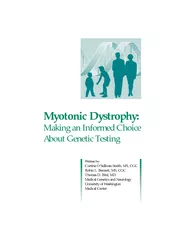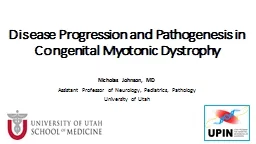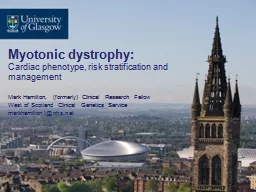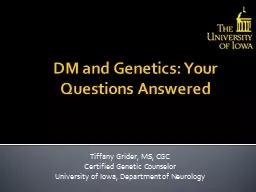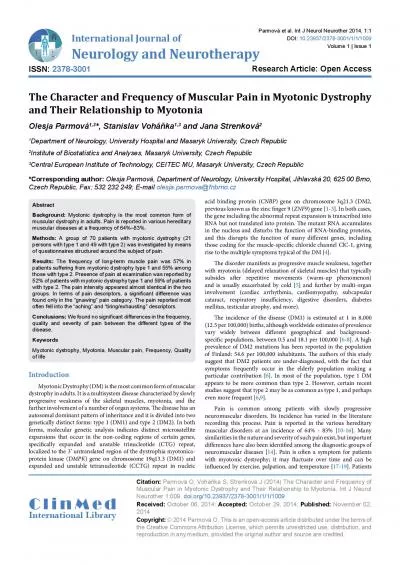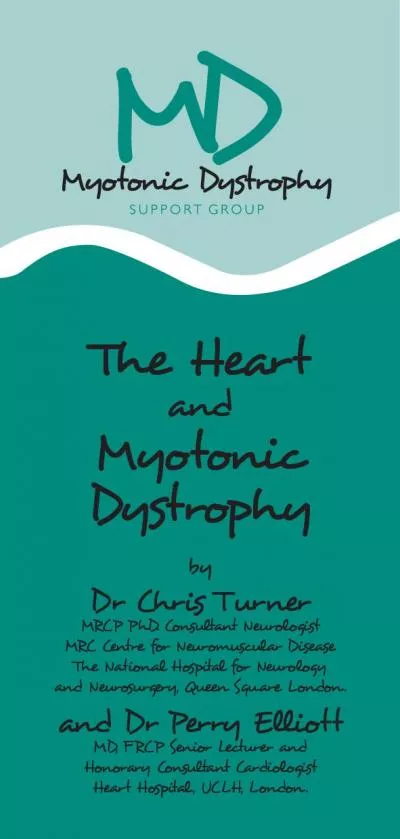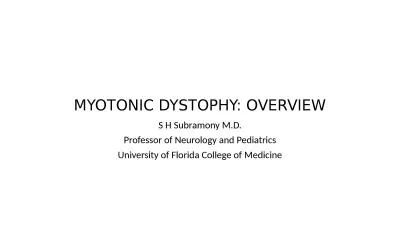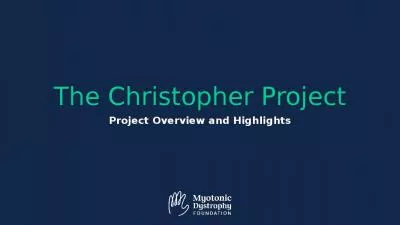PDF-Myotonic Dystrophy Making an Informed Choice About Gen
Author : myesha-ticknor | Published Date : 2015-06-05
Bennett MS CGC Thomas D Bird MD Medical Genetics and Neurology University of Washington Medical Center brPage 2br August 2000 The development and printing of this
Presentation Embed Code
Download Presentation
Download Presentation The PPT/PDF document "Myotonic Dystrophy Making an Informed Ch..." is the property of its rightful owner. Permission is granted to download and print the materials on this website for personal, non-commercial use only, and to display it on your personal computer provided you do not modify the materials and that you retain all copyright notices contained in the materials. By downloading content from our website, you accept the terms of this agreement.
Myotonic Dystrophy Making an Informed Choice About Gen: Transcript
Download Rules Of Document
"Myotonic Dystrophy Making an Informed Choice About Gen"The content belongs to its owner. You may download and print it for personal use, without modification, and keep all copyright notices. By downloading, you agree to these terms.
Related Documents

